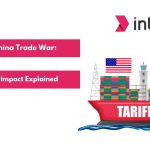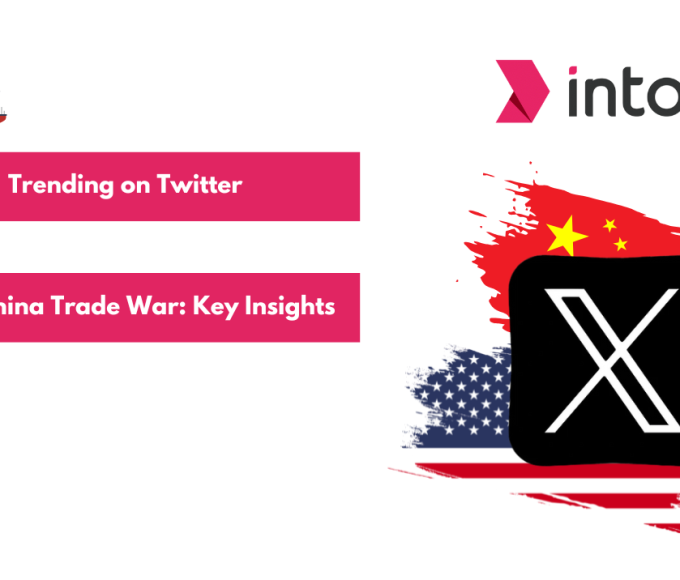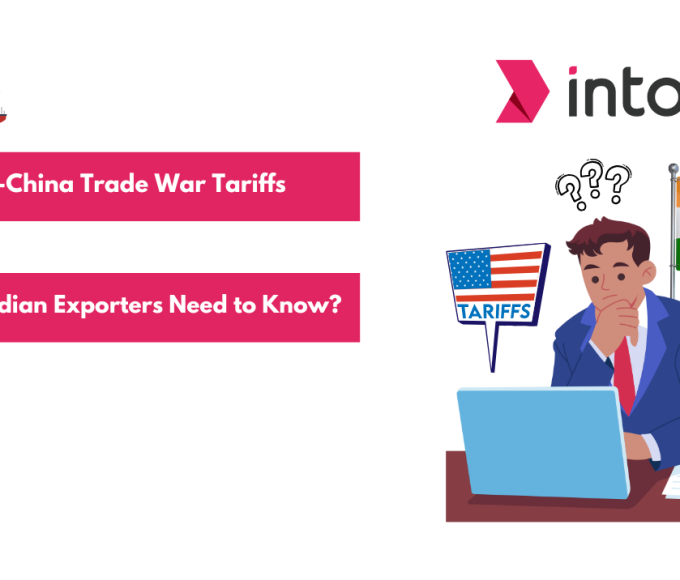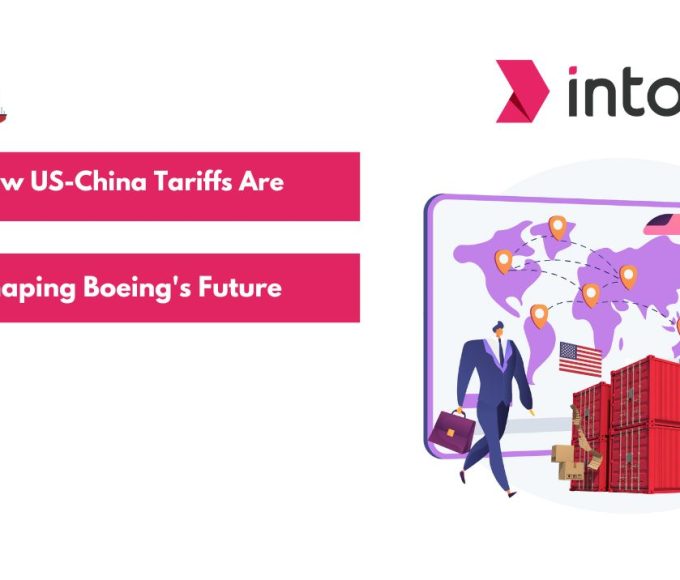The world’s manufacturing powerhouse is facing its biggest challenge in decades. China’s export fall is already reshaping global trade flows, with Chinese shipments to the US projected to drop by as much as $485 billion by 2027. For Indian exporters, this presents an unprecedented opportunity to capture global market share.
China has dominated global manufacturing for over two decades, contributing around 30.2% of the world’s manufactured goods in 2024. Recent data reveals concerning trends that affect every business involved in cross-border trade. Export growth has become volatile, with exports jumping 12.4% in March 2025, primarily due to companies rushing shipments before new tariffs take effect.
This export uncertainty creates both challenges and opportunities for your business. Understanding these shifts helps you make informed decisions about sourcing, supply chains, and market positioning in a rapidly evolving global trade environment.
Key Takeaways
- China’s exports are set to drop by $485 billion by 2027, creating a rare opening for Indian exporters to win global contracts.
- US tariffs, weak Western demand, and tech restrictions are forcing buyers to diversify suppliers beyond China.
- Indian manufacturers with strong quality, compliance, and delivery performance are positioned to capture long-term partnerships.
- Operational excellence, strategic logistics, and fast market response will decide who secures this shifting demand.
- Exporters who invest in scalable capacity, compliance readiness, and resilient supply chains now will be best placed to win long-term global market share.
Why Are China’s Exports Falling?
China’s export fall stems from multiple interconnected factors that have been building for years. Exports to the United States crashed 21% in April 2024, highlighting the severity of current trade tensions. The situation goes far deeper than typical economic cycles and represents a fundamental shift in global trade relationships.
Here are the main reasons driving this decline:
Impact of Trump-Era Trade Policies
The US-China trade relationship got worse during Trump’s first presidency. It has continued under other administrations. Current “America First” policies have become more stringent.
New tariff structures are actively pricing Chinese goods out of American markets. This creates lasting impacts on trade between the countries.
When your buyers in the US can get similar products from India at 15-20% lower costs after tariffs, the buying decision becomes easy. This price difference is reshaping how American businesses buy products.
Reduced Demand from High-Income Economies
American and European buyers are placing smaller, pickier orders. After the pandemic, businesses learned that relying too much on a single supplier creates big risks. Companies are actively spreading their supplier base to build strength.
Consumer behavior has also changed in rich countries. Americans and Europeans are spending more on services and experiences. This reduces demand for manufactured goods that formed the backbone of China’s export economy.
Technology Restrictions Create Production Barriers
The semiconductor and technology export restrictions extend the technological control and innovation access. When the US restricts technology exports to China, it affects both current production capabilities and future innovation potential.
This creates advantages for Indian manufacturers who retain access to these technologies and can offer comparable products without the same restrictions.
Over-Dependence on Western Markets Becomes a Liability
China built its export success by focusing heavily on high-value Western markets. This strategy worked brilliantly during growth periods but created vulnerability when those relationships soured. With approximately 11.9% of total exports going to the US alone, any significant disruption in that relationship creates massive economic impacts.
This market concentration created cascading effects throughout China’s economy when demand from major markets began declining.
How China’s Export Fall Is Impacting Its Economy?
China’s economic challenges go far beyond export numbers. When export-driven growth fails, the effects spread through every sector of the economy. Independent research shows China’s actual GDP growth in 2024 was between 2.4% and 2.8%.
This is much lower than the official figures of 4.8%. These significant economic pressures show deeper structural challenges.
Let’s look at how this affects different parts of China’s economy:
Decline in Export-Led GDP Contribution
For decades, China’s economic formula relied heavily on export growth driving overall economic expansion. As export volumes drop, this contribution shrinks dramatically. This forces greater dependence on domestic spending and investment.
The transition proves hard when consumer confidence stays weak. The shift needs significant adjustments in economic policy and business strategy across many sectors. But these changes take time to work.
Reduction in Foreign Direct Investment (FDI)
International companies are reducing investments in Chinese manufacturing facilities as export prospects weaken. This creates a concerning feedback loop where reduced investment leads to lower production capacity and fewer export opportunities.
Major manufacturing upgrade projects face delays as multinational corporations reassess their China strategies and explore alternative locations for future investments.
Employment Losses Reduce Consumer Spending
Factory closures and reduced production directly affect millions of workers. These are workers in export-focused industries. Lower employment rates reduce domestic buying power.
This creates additional economic headwinds that make the export challenges worse. Goldman Sachs expects China’s retail inflation to fall to 0% by 2025, down from 0.2% in 2024. This shows severely weak domestic demand conditions.
Increased Exchange Rate Volatility
Reduced export earnings put downward pressure on the yuan, creating complex trade-offs for Chinese businesses. While a weaker currency might make exports more price-competitive, it also increases costs for importing raw materials and components essential for manufacturing.
This currency volatility adds uncertainty to international trade contracts and complicates long-term business planning for both Chinese exporters and their international partners.
Position your exports as a reliable alternative for global buyers.
Contact Intoglo today!The ripple effects of China’s export fall are already apparent across its economy, from slowing GDP growth to declining foreign investment and rising job losses. These pressures have pushed China to act quickly with new policies aimed at stabilizing exports.
Understanding how the government is responding helps reveal whether China can weather this storm or if more profound shifts are needed.
How the Chinese Government Is Responding to the Slowdown?
China has implemented multiple strategies to address export challenges and support affected manufacturers. These measures aim to maintain production capabilities while reducing dependence on traditional Western markets, but the effectiveness remains limited by external market forces.
Here’s what the Chinese government is doing:
Export Incentives and Manufacturing Support Expand
The government significantly increased export tax rebates and manufacturing subsidies to help companies maintain competitiveness despite challenging market conditions. These financial incentives provide temporary relief but cannot address fundamental demand issues in key markets.
Special support programs target sectors most affected by trade restrictions, including technology, electronics, and advanced manufacturing categories that face the greatest international scrutiny.
Alternative Market Development
China actively pursues expanded trade relationships with ASEAN countries, African nations, and Latin American markets. These regions offer growth potential as middle-class populations expand and infrastructure development creates new demand opportunities.
The Belt and Road Initiative serves as a framework for developing these alternative trade relationships, but building meaningful commercial relationships takes time and significant investment.
Domestic Consumption Promotion
Investment in domestic market development aims to reduce export dependence through consumer incentive programs and infrastructure spending. This strategy supports internal demand growth but faces challenges from weak consumer confidence and employment concerns.
The transition from export-driven to consumption-driven growth requires fundamental economic restructuring that extends beyond short-term policy measures.
Trade Agreement Benefits: Maximize Market Access
China is working on maximizing benefits from RCEP (Regional Comprehensive Economic Partnership) and bilateral trade agreements. These arrangements provide preferential access to alternative markets and help offset losses in traditional destinations.
However, these new markets often lack the purchasing power and volume capacity of established Western markets, limiting their ability to compensate for lost export revenue fully.
Want to be the supplier that buyers turn to as they shift from China?
Interact with us now!While Beijing’s policies aim to stabilize its manufacturing base and diversify trade, many of these measures will take years to deliver meaningful results. In the meantime, global buyers, especially in the US, are not waiting. They are actively shifting orders away from China to reduce risk, opening the door for competitive suppliers in other markets.
For Indian exporters, this shift represents a rare and time-sensitive opportunity to capture business, build long-term partnerships, and strengthen global market presence.
What Does This Sharp Chinese Export Fall Mean for Indian Exporters?
China’s export fall has opened a rare window for you as an exporter. US buyers are urgently shifting orders to alternative suppliers, with sourcing from India. The opportunity is real, but so is the competition from Vietnam, Bangladesh, and Mexico. Winning in this market will depend on how quickly you adapt, where you focus, and how consistently you deliver.
Here’s where the biggest opportunities lie and how you can capture them before others do.
1. Fulfill Global Demand for Key Indian Product Categories
Buyers are replacing Chinese suppliers in high-value and mid-volume categories.
- Apparel exports to the US rose 13% in 2025 compared to last year, driven by demand for cotton (HS code 5209.11.00) and blended fabrics.
- Inquiries for electronics components and automotive parts are up, especially from mid-tier US manufacturers.
- Market entry is fastest if you already meet US or EU quality and safety certifications.
Action Step: Identify your top three product categories with the highest international demand and align production capacity to meet that surge.
2. Securing Long-Term Supply Partnerships with US Buyers
US importers are not looking for stopgap solutions; they want dependable supply chain partners.
- Buyers prefer exporters who can scale production over multiple years.
- Flexibility in product specifications helps you secure recurring contracts.
- Relationship-driven supply agreements lead to more predictable order volumes.
Action Step: Offer multi-year pricing or supply commitments to position yourself as a strategic partner, not a short-term vendor.
3. Meeting Higher Quality and Compliance Benchmarks
The exit from China has not lowered buyer expectations; it has raised them.
- US buyers demand ISO 9001, CE, or ASTM compliance for most industrial goods.
- Late deliveries can result in canceled contracts and loss of preferred supplier status.
- Traceability and ESG compliance are now part of many procurement audits.
Action Step: Secure key certifications before bidding for large US orders to avoid delays in onboarding.
4. Capturing More of the Value Chain
The shift is not just about replacing manufacturing capacity. Buyers are open to suppliers who can take on higher-value roles.
- Opportunities in design customization, packaging solutions, and inventory management are growing.
- Direct customer relationship management strengthens your pricing power and market position.
Action Step: Add at least one service beyond production, such as in-market warehousing or custom packaging, to stand out in competitive bids.
5. Standing Out Through Operational Excellence
Reliable delivery is the single most significant factor in winning repeat orders.
- US buyers benchmark suppliers on lead times and on-time delivery percentages.
- Transparent communication about shipping status builds trust.
Action Step: Utilize integrated logistics and tracking solutions to ensure your delivery metrics meet on-time performance standards. Intoglo’s direct shipping line access, US warehousing, and compliance tools will keep you ahead of your competitors.
Be the supplier global buyers can rely on.
Request a quote now!How Intoglo Helps You Respond to Global Trade Shifts?
Capturing opportunities in shifting global supply chains requires more than manufacturing capability. You need logistics partners like Intoglo who understand international trade complexities and can deliver the reliability and cost-effectiveness that global buyers demand.
Listed below are some of the services Intoglo offers to manufacturers and exporters to navigate global trade shifts effectively.
Direct Shipping Line Relationships Ensure Capacity Access
Our direct partnerships with major shipping lines, including Maersk, Hapag-Lloyd, MSC, CMA CGM, ZIM, and Evergreen, guarantee container space availability even during peak demand periods. This direct access eliminates middleman markups while providing faster route access and better service reliability.
Direct relationships become particularly valuable when shipping capacity is tight due to changing global trade flows and route adjustments.
Real-Time Rate Comparison Enables Quick Response
Our platform provides instant rate quotes across multiple shipping lines and routing options. You can compare costs and transit times immediately, enabling rapid response to customer inquiries and competitive pricing for new business opportunities.
Transparent, all-inclusive pricing eliminates surprise charges and helps you maintain competitive margins while building customer trust through reliable cost estimates.
Strategic US Warehousing Network Reduces Delivery Times
Access to 50+ strategically located warehouses positions your inventory closer to end customers across the United States. This proximity reduces last-mile delivery costs and transit times, making your products more competitive against both Chinese suppliers and other alternatives.
Our warehousing network supports both B2B distribution and D2C fulfillment requirements, providing flexibility to serve diverse customer needs and market channels.
Expert Compliance Support Prevents Costly Delays
Our in-house compliance team manages HS code classification, customs clearance, and regulatory requirements for both Indian exports and US imports. This expertise helps you avoid delays, penalties, and compliance issues that can damage customer relationships.
Our AI-powered HS code scanner provides instant product classification using product photos, reducing documentation errors and streamlining the export process.
Amazon FBA Expertise Eliminates Platform Penalties
For companies selling through Amazon’s marketplace, we provide specialized Amazon FBA delivery services with a deep understanding of platform requirements. Our Amazon logistics experts ensure your shipments meet all packaging, labeling, and delivery guidelines to avoid costly penalties.
Direct delivery to Amazon fulfillment centers streamlines your supply chain and reduces handling costs while ensuring compliance with Amazon’s stringent operational requirements.
Complete Shipment Visibility Through Advanced Tracking
Glotrack provides comprehensive real-time visibility from pickup at your facility in India through final delivery in the United States. You can monitor shipment progress, receive proactive status notifications, and access all documentation through a unified platform interface.
This visibility enables accurate customer communication and helps identify potential issues before they affect service levels or customer satisfaction.
Conclusion
China’s export fall marks a structural shift in global trade. As buyers diversify their supply chains, Indian exporters have a rare opportunity to capture market share that Chinese suppliers once dominated. Winning in this new landscape means more than offering competitive prices; it demands speed, compliance, quality, and the right logistics strategy.
Those who invest now in strong manufacturing capabilities and reliable trade partnerships will secure long-term positions in global supply networks.
Intoglo gives you the edge: instant freight quotes, direct shipping line access, strategic US warehousing, and expert customs clearance, all in one platform. With supply chains shifting fast, now is the time to act and position your business as the go-to alternative to China.
Reach out to Intoglo today to access faster shipping, smooth customs clearance, and strategic US warehousing that gives you the edge in global trade.
FAQ’s
1. What is the rise of China and its impact on global trade?
China’s rapid industrialization and large-scale manufacturing capacity transformed it into the world’s largest exporter. This expansion lowered global production costs, reshaped supply chains, and increased trade volumes across multiple industries and regions.
2. How does the US-China trade war affect the global economy?
Tariff hikes and trade restrictions between the US and China disrupt supply chains, raise production costs, and shift sourcing patterns. These tensions influence investment flows, alter trade agreements, and create uncertainty for businesses worldwide.
3. What’s so special about China’s exports?
China combines massive production capacity with competitive pricing, skilled labor, and advanced infrastructure. Its ability to scale quickly while producing across diverse industries allows it to serve a wide range of global markets efficiently.
4. What is America’s main export to China?
The United States exports significant quantities of agricultural products to China, particularly soybeans. These exports also include aircraft, automobiles, and industrial machinery, reflecting high demand for American technology and raw materials in Chinese industries.
5. What percentage of US goods are made in China?
Around 16% of goods sold in the United States originate from Chinese manufacturing. This share covers consumer electronics, clothing, machinery, and household products, reflecting China’s role as a key supplier to American markets.









Leave a comment